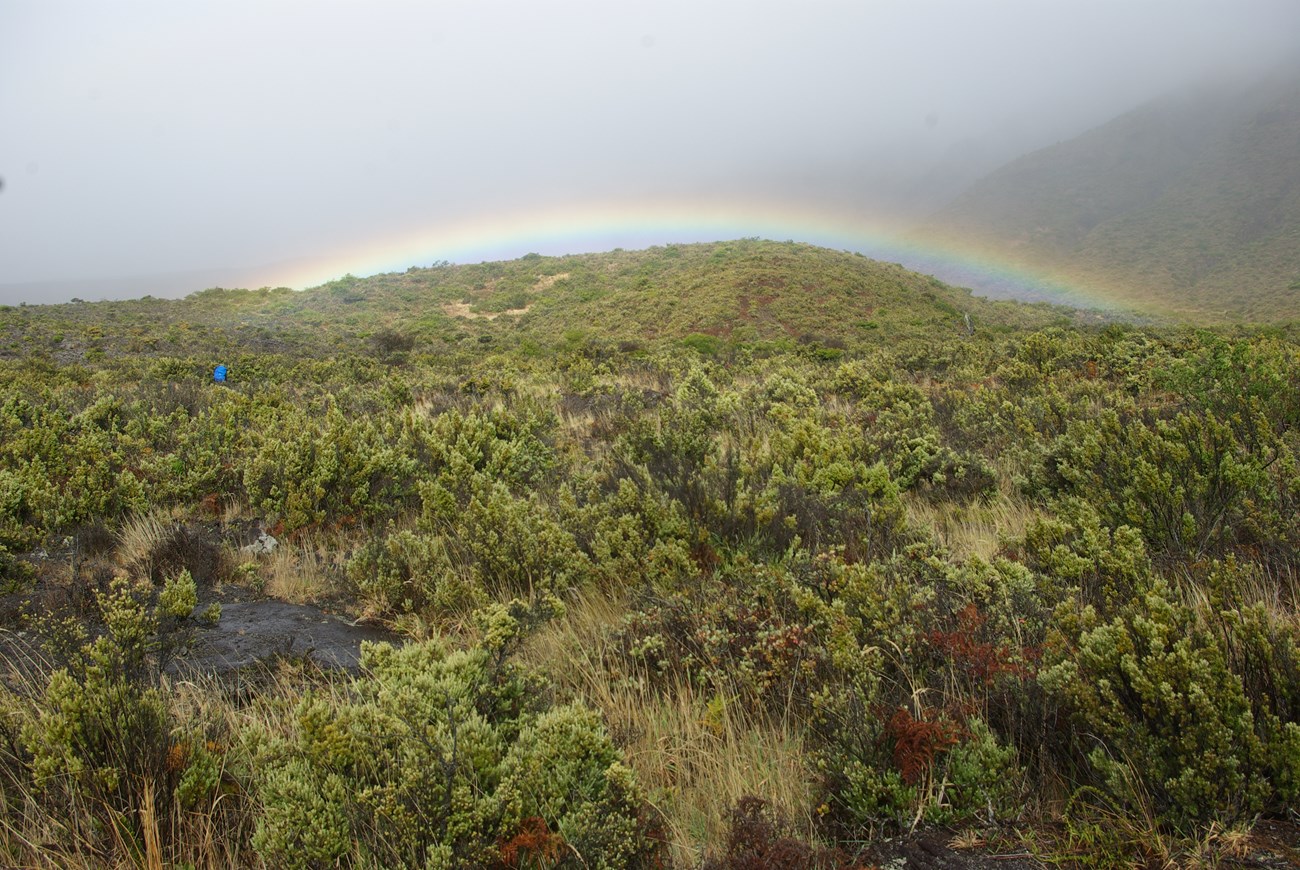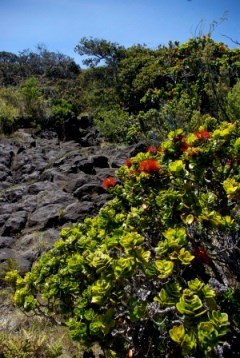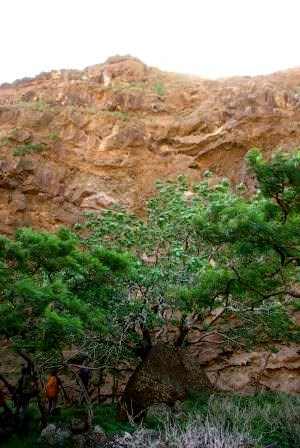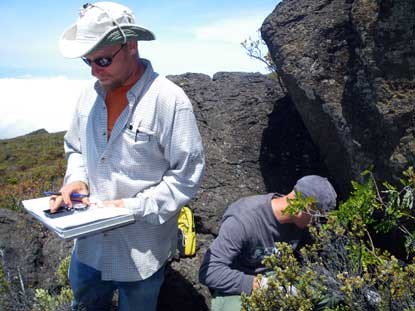
NPS Photo - Stacey Torigoe 
NPS Photo - Stacey Torigoe Haleakalā, rising from the sea to a 10,023 foot summit, and exposed to both the windward moist tradewinds and leeward drying air, has a variety of natural ecosystems. Wind, rain, temperature and altitude all play a role in shaping each zone, as well as bringing plants and animals here. Visit the Plant Communities page for more information on the diverse plants in each ecosystem you might see. The alpine aeolian zone seems barren. The porous, rocky, dry surface has wide temperature range between day and night. Only a few species survive this tough environment. Silverswords stand out in this open landscape. Subalpine shrublands cover broad areas below the alpine zone. Native shrubs like pukiawe, mamane, ohelo and pilo are dominant. Nēnē, the native Hawaiian goose, are locally conspicuous in the shrublands. Lower, on the windward slopes with rainfall of 120 to 400 inches annually, rainforest prevails. Above 3,000 feet elevation the rainforest is largely native species with ʻōhiʻa and koa forming a closed canopy. Here, native Hawaiian honeycreepers sip nectar from native trees and flowers. 
NPS Photo - Stacey Torigoe Below the shrub zone dry forest occupies the drier leeward slopes, with less than 60 inches of rain. Fire and alien ungulates have devastated most of Maui's dry forest. Only small patches are found within the park. The ʻOheʻo stream ecosystem crosses several life zones. ʻOheʻo stream, with its entire length within the national park is one of very few completely natural riparian habitats in Hawaiʻi. Native fish and shrimp are stream residents. 
NPS Park Inventory and Monitoring Program The Natural Resources Inventory and Monitoring (I&M) Program provides an opportunity to improve the quantity, quality and availability of natural resources data for park managers and the public. For more information about the program, please click here. |
Last updated: April 23, 2016
